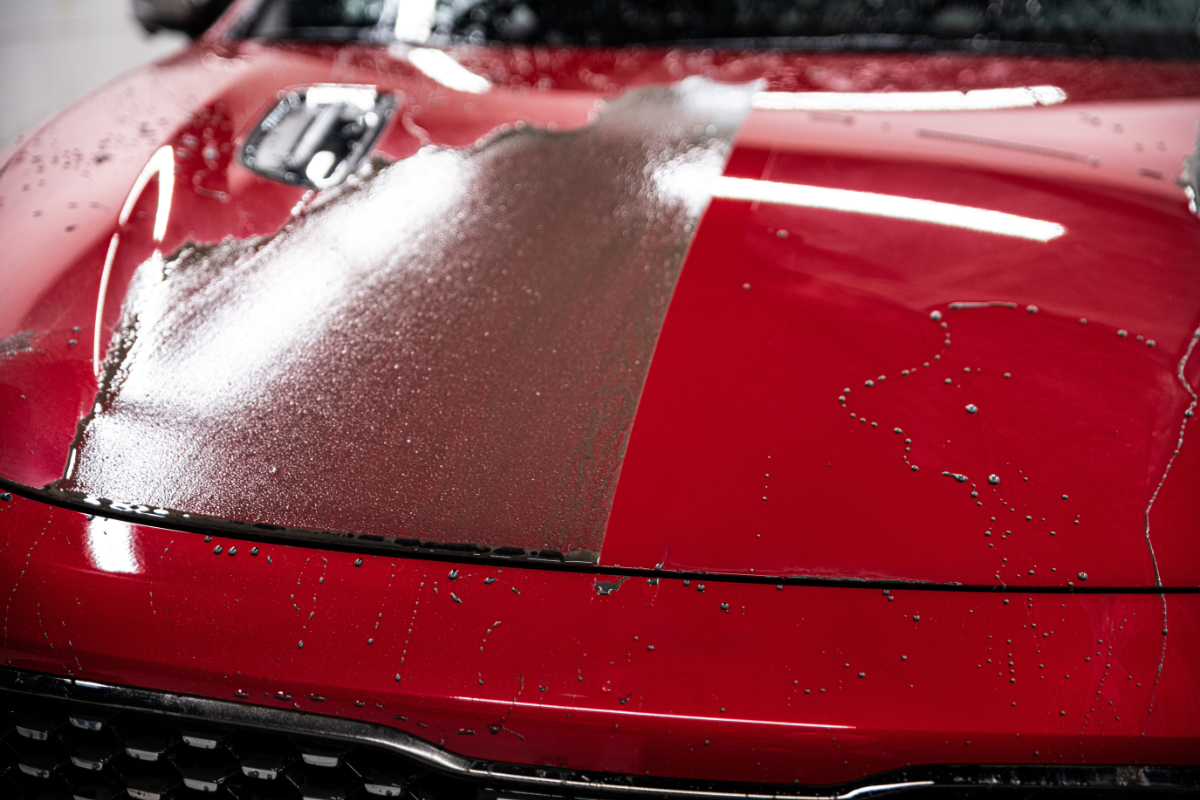The Function of Ceramic Coating Philadelphia in Protecting Against Scrapes and Damages
Why Ceramic Layer Is the Ultimate Solution for a Remarkable End Up
Ceramic finish has actually arised as a leading option for those seeking a remarkable finish for their cars, thanks to its remarkable durability and safety attributes. What variables genuinely established ceramic layer apart?
What Is Ceramic Covering?

When applied correctly, ceramic covering creates a hydrophobic surface that drives away water and dirt, making it less complicated to clean up and keep. Unlike traditional waxes or sealants, which commonly offer brief security, ceramic layers can last for several years, relying on the product quality and application technique. The procedure of applying ceramic finishing needs precise prep work, consisting of complete cleansing and in some cases repaint improvement, to make sure optimal bonding and efficiency.
Ceramic layers are not restricted to vehicle surface areas; they can likewise be made use of on different products, consisting of glass, steel, and plastics, offering a functional option for boosting protection. Overall, ceramic covering represents a significant advancement in surface protection technology, incorporating both practical and visual advantages for a wide variety of applications.
Advantages of Ceramic Layer
While numerous surface area defense options exist, the benefits of ceramic finishing stand out due to its distinct residential or commercial properties and durable efficiency. One of the main advantages is its remarkable toughness. Ceramic Coating Philadelphia. Unlike standard wax or sealers that need constant reapplication, ceramic finishes give a resilient layer that can last for numerous years, dramatically reducing upkeep efforts
Another significant advantage is boosted protection against ecological impurities. Ceramic coatings create a hydrophobic surface area that pushes back water, dust, and different pollutants, making it less complicated to cleanse. This function not only preserves the vehicle's look but additionally decreases the risk of deterioration and oxidation, especially in harsh climate condition.
Moreover, ceramic coverings use exceptional resistance to UV rays, preventing fading and destruction of paint with time. This UV protection is critical for preserving the aesthetic value of cars and surfaces revealed to direct sunlight.
Furthermore, the shiny finish attained with ceramic coating boosts the total visual appeal, offering surfaces a showroom-quality luster. In general, ceramic layers represent a considerable innovation in surface area protection innovation, providing enduring advantages that satisfy both useful and aesthetic demands.
Just How It Works
Comprehending the scientific research behind ceramic finishes reveals exactly how they provide such remarkable defense and long life. At its core, a ceramic coating is a liquid polymer that chemically bonds with the vehicle's manufacturing facility paint.
The application process involves numerous steps, consisting of surface preparation, which is vital to attaining optimum attachment. When used, the covering undertakes a treating procedure, throughout which it solidifies and develops a semi-permanent bond with the paint surface area. This bond is what identifies ceramic layers from standard waxes and sealers, supplying a longer-lasting protective barrier that can withstand for several years.
Moreover, the thickness of the layer can boost its safety high qualities, making certain that it can endure severe conditions. Ultimately, the scientific research of ceramic coverings combines advanced materials with ingenious application techniques to provide an exceptional level of defense and aesthetic improvement for vehicles.
Comparison With Traditional Techniques
The advantages of ceramic layers become especially noticeable when compared to standard paint protection methods such as sealants and waxes. While waxes offer a short-lived luster, usually lasting a few weeks to a number of months, ceramic coverings give a lasting safety layer that can endure for numerous years. This longevity substantially reduces the frequency of reapplication, making ceramic coverings a more economical solution over time.
Furthermore, traditional approaches usually require substantial prep work and multiple applications to accomplish a sufficient level of security. On the other hand, ceramic coatings bond at a molecular degree with the lorry's surface, producing a durable guard versus environmental contaminants like UV rays, acid rain, and road salts. This bond boosts the vehicle's resistance to scratches and swirl marks, which are widespread with typical waxes and sealants.
Additionally, the hydrophobic properties of ceramic layers push back water and dirt, causing simpler cleaning and maintenance. In comparison, wax and sealant-treated surface areas can draw in gunk, requiring even more regular cleaning - Ceramic Coating Philadelphia. In general, ceramic layers not just supply premium security however likewise deliver an extra visually appealing and enduring coating, developing them as the preferred choice for discerning car proprietors
Application and Maintenance Tips

Using a foam applicator, apply the layer in little areas, complying with the maker's standards regarding thickness and overlap. go Allow adequate healing time in between layers, usually 24 hours, to ensure correct bonding. After application, it is vital to stay clear of exposure to water or rough aspects for at the very least a week to permit the coating to fully cure.
For maintenance, clean the automobile consistently with pH-balanced soaps and stay clear of unpleasant products. Touchless vehicle cleans are advised to minimize damaging. In addition, making use of a ceramic upkeep spray can enhance the finish's hydrophobic buildings and durability. Normal evaluations for any type of indicators of wear will certainly assist keep the layer's honesty and maintain that excellent coating.
Conclusion
In verdict, ceramic covering emerges as a remarkable Ceramic Coating Philadelphia alternative for achieving a remarkable vehicle coating. By creating a robust bond with manufacturing facility paint, ceramic layer properly shields against scrapes, UV rays, and ecological impurities.
